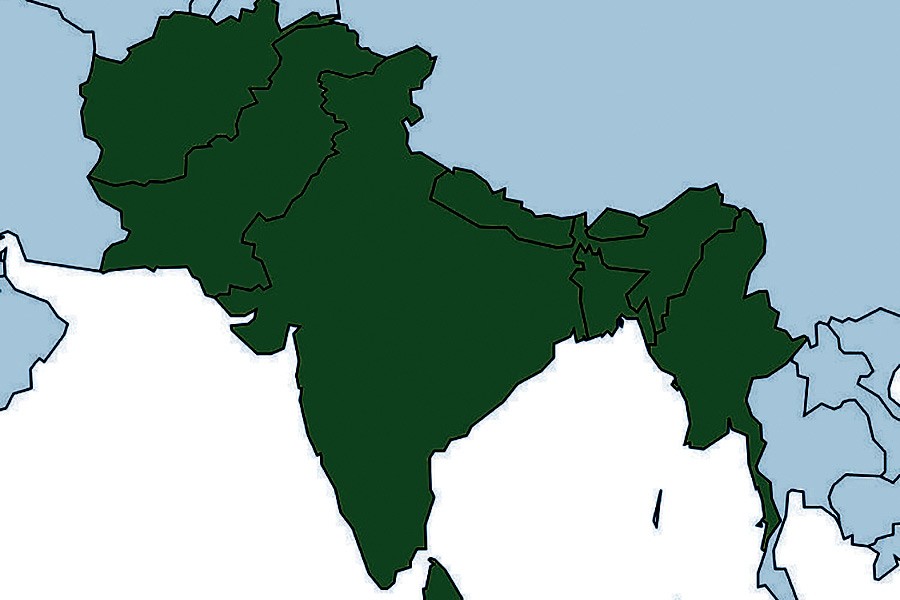For many years, Bangladesh has been trying to diversify its exports and markets. So far, these efforts have yielded little: 75 per cent of total exports still go to traditional markets such as the European Union (EU) and the United States, and 83 per cent of goods exports consist of readymade garments.
The lack of market diversification is harder to explain, given that Bangladesh is part of South Asia, the fastest growing region in the world. On average, it has directed only about 2.5 per cent of its total exports over the last decade to this dynamic market.
The World Bank Group's recent report, A Glass Half Full: The Promise of Regional Trade in South Asia (http://hdl. handle.net/10986/30246), shows that intra-regional goods trade in South Asia could increase from US$ 23 billion to US$ 67 billion. Moreover, Bangladesh could increase its exports to the region ten-fold, from the present US$1.0 billion to almost US$10 billion.
The report identifies several specific areas for Bangladesh to focus on, including eliminating the anti-export bias in tariff policies, addressing non-tariff measures (NTMs), and reducing the excessive costs of connectivity with its neighbours. This note focuses on NTMs.
NTMs are policy measures other than customs tariffs that can impact international trade, such as the specification of a maximum level of pesticide residues on agricultural products. All countries, including Bangladesh, legitimately impose NTMs to safeguard consumer interests and protect plant and animal life. However, NTMs become non-tariff barriers if they are more burdensome than necessary to achieve a legitimate goal, like if customs officials behave arbitrarily and do not apply rules uniformly.
NTMs include product standards and quality specifications that are particularly important for the export of agro-processed items. Bangladesh exported around US$239 million of agro-processed products in FY16, of which only about 13 per cent went to South Asia, mostly to India. The region can absorb much more of Bangladesh's agro-processed products - a clear example being Northeast India, which provides a ready and proximate market. What do NTMs have to do with this under-performance?
To get to the bottom of this, the "Glass Half Full" report surveyed 207 firms in Bangladesh and India. The survey results, combined with a detailed examination of regulations and extensive consultations with regulators, were revealing. Owing to a lack of awareness about regulations and standards, and inadequate infrastructure for measuring and certifying quality, many legitimate NTMs are perceived as non-tariff barriers, diverting attention from addressing these trade hindrances.
Lack of information creates misperceptions and generates noise around NTMs. For example, for export products that were tested in India, many surveyed traders and customs officials relied on the Central Food Laboratory in Kolkata, creating a backlog. None of them were aware that there are other accredited private and public laboratories in India that could also be used for testing. Sending samples to those laboratories could move the process faster.
Similarly, limited accredited capacity for testing and certification in Bangladesh also creates noise in the system. To export processed food to India, the product needs to be tested in a laboratory notified by the Food Safety and Standards Authority of India (FSSAI) and accredited by India's National Accreditation Board for Testing and Calibration Laboratories (NABL). Until recently, many exporters were not aware of the FSSAI notification requirement, and expected products certified by NABL-accredited laboratories to only be subject to random testing by Indian customs authorities. This situation led to complaints about non-tariff barriers imposed by Indian authorities.
In April 2017, FSSAI issued a notification authorising the Bangladesh Standards and Testing Institute (BSTI) to issue test certificates for 21 food products. Export consignments of these 21 food products, if accompanied by a valid certificate issued by the BSTI, which is now NABL-accredited and FSSAI-notified, would be eligible for only random testing by Indian customs.
A legitimate non-tariff barrier (on both sides of the border) is the delay stemming from inadequacies in border infrastructure and cumbersome procedures. Very few border points have Electronic Data Interchange (EDI), Risk Management System (RMS), and a Single Window. Globally, the most efficient trading systems share data with each other in a seamless, electronic mode, which allows goods to clear with minimal friction and delays. South Asian systems are not there yet.
What should Bangladesh do? Distinguishing between real and perceived non-tariff barriers can allow policy makers to focus on genuine issues. Bangladesh could initiate information campaigns and workshops to inform exporters and other stakeholders about the availability of testing laboratories in India and the requirements to be eligible for only random testing at the Indian border. Agencies like BSTI can proactively engage with FSSAI and NABL of India to expand the product list that BSTI and other agencies can certify. Bangladesh can also seek technical assistance to enhance its capacity for testing and certification of agro-based products. Border infrastructure should be upgraded in a coordinated manner on both sides of the border to enable electronic data exchange.
Recent data shows a surge in exports to India, with exports more than doubling to US$375 million in July-September 2018 versus July-September 2017, including an eight-fold jump in agricultural product exports to US$115 million. To ensure that these gains endure, and to broaden the export base beyond readymade garments, Bangladesh needs to focus on the issues related to NTMs. Bridging the information gap among stakeholders and addressing legitimate NTMs through well-directed policy measures, like those noted above, can be critical elements in addressing the diversification challenge.
Qimiao Fan is Director for Equitable Growth, Finance and Institutions and former Country Director for Bangladesh, Bhutan and Nepal; Sanjay Kathuria is Lead Economist, South Asia, Macroeconomics, Trade and Investment; Nadeem Rizwan is Consultant, Macroeconomics, Trade and Investment, World Bank.


